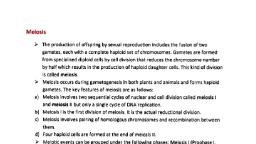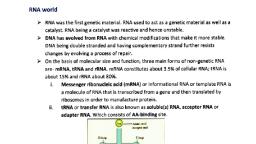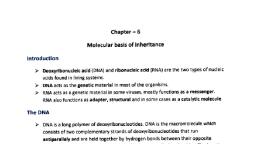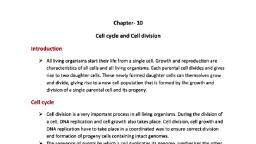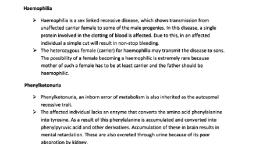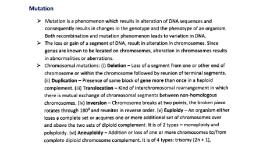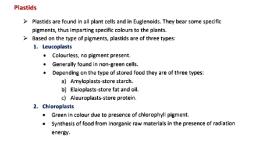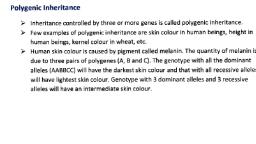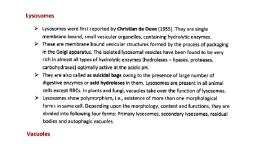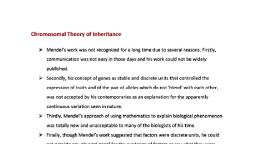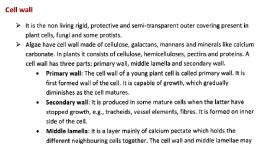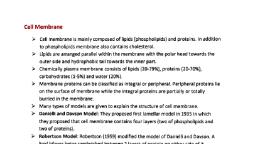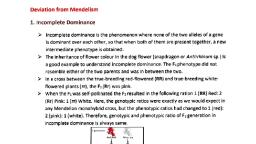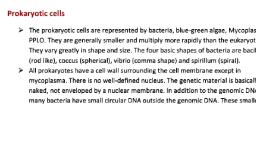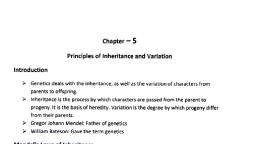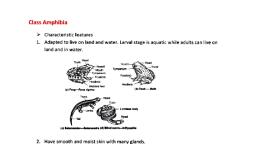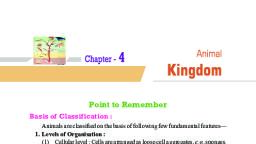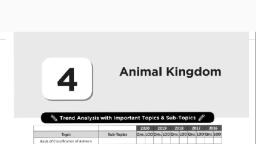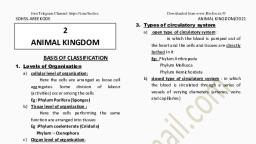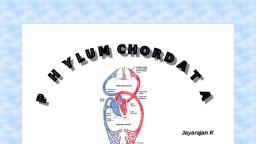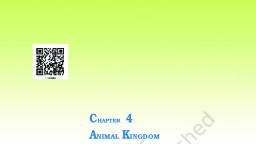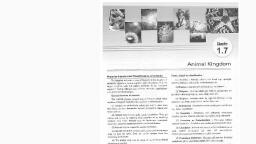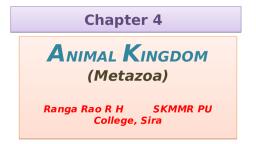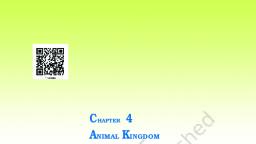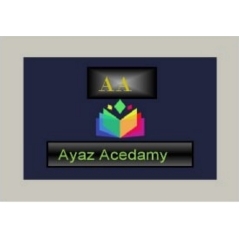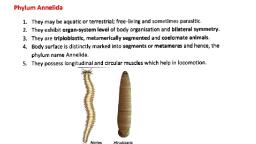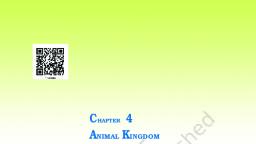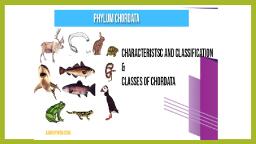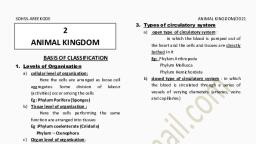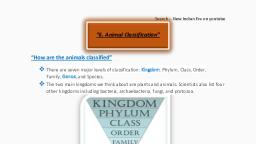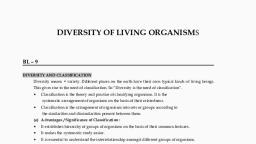Page 1 :
Phylum Chordata, ➢ Phylum Chordata has four fundamental features:, 1. Notochord ( elastic, solid, ensheathed rod-like structure of vacuolated turgid cells which, is present throughout the life or only during early embryonic development, located between, nerve cord and digestive tube (alimentary canal)., , Fig.: Chordata characteristics, 2. Dorsal hollow nerve cord:, ✓ It differentiates into brain and spinal cord., ✓ It is present above the notochord., 3. Paired pharyngeal gill slits:, ✓ Take part in circulation of water for respiration., ✓ In higher chordates, they occur only in embryonic stage., 4. Post anal tail:, ✓ It is present for balancing., Table: Comparison of Non-chordates and Chordates, Non-chordates, , Chordates, , 1. Notochord absent, , 1. Notochord present, , 2. Central nervous system is ventral, solid, and double., , 2. Central nervous system is dorsal, hollow, and single., , 3. Gills slits are absent., , 3. Pharynx perforated by gill slits., , 4. Heart is dorsal., , 4. Heart is ventral., , 5. Post-anal tail is absent., , 5. A post-anal tail is present.
Page 2 :
➢ Phylum chordata is divided on the basis of whether it has cranium (brain-box) or not., , Phylum Chordata, 2 sub groups, , Acraniata or Protochordata, , Craniata or Euchordata, , No brain box or cranium, , Cranium is present, , Sub-phylum, Sub-phylum, , Urochordata/Tunicata, , Cephalochordata, , Notochord is present only, , Notochord extends, , In larva tail, E.g., Ascidia, Salpa, Dollolum, , from head to tail region, , Vertebrata, , E.g., Branchiostoma, , CLASSIFICATION OF PROTOCHORDATA OR ACRANIATES, Sub-Phylum – 1. UROCHORDATA, 1. The adult body is enclosed within a leathery test or tunic formed of a cellulose-like, organic substance termed tunicin, therefore, this phylum is called tunicata., 2. Notochord is only present in the tail of the larva (hence named Urochordata) and, disappears in the adult., 3. Circulatory system is open in tunicates., , 4. Development is indirect.
Page 3 :
5. Retrogressive metamorphosis shown by the larva i.e., change from better developed, larva to less developed adult., 6. Excretion by neural gland., Example: Ascidia, Salpa, Dollolum, Herdmania., , Sub-Phylum – 2. CEPHALOCHORDATA, 1. Notochord extends from head to tail region., 2. Notochord persists through the life., 3. Digestive tract is complete. Pharynx large, perforated by numerous persistent gillslits., 4. Circulatory system is well-developed, closed and without heart., 5. Development indirect, including free swimming larva., Example: Branchiostoma, Amphioxus has both ends pointed like lance, hence it is commonly called lancelet., , Sub-Phylum – 3. VERTEBRATA/CRANIATA, General characteristics of subphylum vertebrata:, 1. Brain is enclosed within a cranium., 2. Possess notochord during the embryonic period only., 3. Notochord is replaced by a cartilaginous or bony vertebral column in the adult, thus, all vertebrates are chordates but all chordates are not vertebrates., 4. Vertebrates have ventral muscular heart with two, three or four chambers., 5. Kidneys are present for excretion and osmoregulation., 6. For locomotion, they have paired appendages which may be fins or limbs., 7. They are unisexual., 8. They have single pair of gonads.
Page 5 :
Class 1. Cyclostomata, General characteristics of Cyclostomata, 1., 2., 3., 4., 5., 6., 7., 8., 9., , All living members of this class are ectoparasites on some fishes., They have an elongated body bearing usually 6-15 pairs of gill slits for respiration., Cyclostomes have sucking circular mouth., Mouth is without jaws hence they are called as jawless fishes., Their body is devoid of scales and paired fins., Cranium and vertebral column are cartilaginous., Stomach is absent., Circulation is of closed type., Heart is two-chambered with 1 auricle and 1 ventricle, with a conus arteriosus, anteriorly., 10. Cyclostomes are marine but migrate for spawning to fresh water. After spawning,, within a few days they die. Their larvae, after metamorphosis, return to the ocean., Example. Petromyzon and Myxine., Division-2: GNATHOSTOMATA (The jawed vertebrates), 1., 2., 3., 4., 5., 6., 7., , It includes advanced vertebrates., Mouth has jaws hence it is named Gnathostomata., Embryonic notochord is usually replaced in adult by a vertebral column., Paired fins or limbs are present., They have paired nostril., They are both cold-blooded and warm-blooded., Gnathostomata is divided into two super classes: Pisces and Tetrapods., , Superclass-1: PISCES, 1., 2., 3., 4., 5., 6., 7., , It includes true fishes., All are aquatic., Paired and unpaired fins are present., Respiration occurs typically by gills., Each eye has a well-developed nictitating membrane, eyelids are absent., Lateral line sense organs are present., Heart is two chambered (S-shaped, venous heart) with sinus venosus and conus, arteriosus., 8. Monocondylic skull, slimy glands present on skin., 9. Vertebrae are Amphicoelous type., 10. Both renal portal and hepatic portal system are found. Hypophyseal portal system, is also present., 11. Kidneys- Mesonephric, Ammonotelic (sharks-Ureotelic).
Page 6 :
Class-1: CHONDRICHTHYES, 1., 2., 3., 4., 5., 6., 7., , They are marine animals with streamlined body., Endoskeleton is made up of cartilage., Notochord is persistent throughout life., Their jaws are powerful. Mouth is located ventrally., Teeth are modified placoid scales which are backwardly directed., Kidneys are Mesonephric., Skin is tough, containing minute placoid scales., , 8. Gill slits are separate and without operculum. Except in the Chimaeras., 9. Air bladder or swim bladder is absent, so they have to swim constantly to avoid, sinking., 10. Heart is two chambered (one auricle and one ventricle)., 11. Organisms belong to this class are cold-blooded i.e., they lack the capacity to, regulate their body temperature., 12. Organisms are predaceous, some of them have electric organs and possess poison, sting., 13. Sexes are separate and show sexual dimorphism., 14. In males pelvic fins bear claspers which are used in copulation., 15. Fertilization is internal, 16. Many of them are viviparous., 17. There are 10 pairs of cranial nerves., Examples: Scoliodon, Pristis, Trygon, Carcharodon., , Class-2: OSTEICHTHYES, 1., 2., 3., 4., 5., 6., , It includes both marine and fresh water fishes with streamlined body., Endoskeleton is made up of bone., Notochord is replaced by distinct vertebrae., Mouth is located terminally., Teeth are present in the jaws., Skin is covered with cycloid/ctenoid scales.
Page 7 :
7. They have four pairs of gills which are covered by an operculum on each side., 8. Air bladder is present which regulates buoyancy., , 9. Heart is two-chambered (one auricle and one ventricle). Lung fishes have a threechambered heart (two auricles and one ventricle)., 10. Caudal fin usually homocercal., Example: Marine- Exocoetus (Flying fish), Hippocampus (Sea horse); Fresh water- Labeo, (Rohu), Catla (Katla), Clarias (Magur); Aquarium- Betta (Fighting fish), Pterophyllum, (Angel fish).


